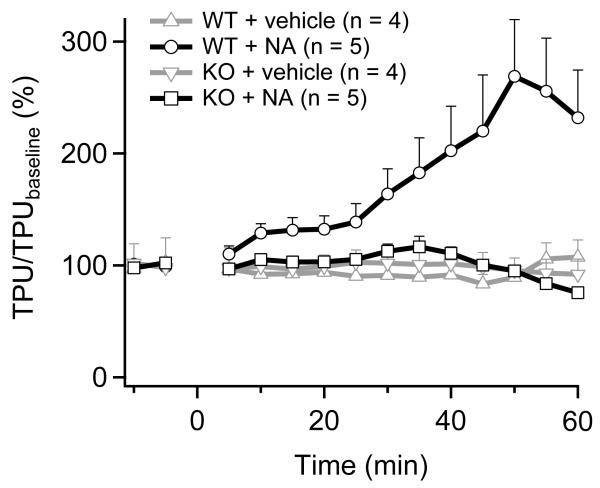Figure 1.
Nicotinic acid induced cutaneous vasodilation was largely attenuated in Trpv1−/− mice. Ear blood flow (expressed as a percentage of baseline flow) in wildtype (WT) and TRPV1 knockout (KO) mice given either nicotinic acid (solved in physiological saline, pH 7.4) or vehicle (physiological saline, with osmolarity adjusted to the same level as nicotinic acid solution using glucose, pH 7.4) at 0 min is plotted over 1 hour. The normal flushing response induced by nicotinic acid was characterized by a more than 100% increase in ear blood flow, which was substantially attenuated in the Trpv1−/− knockout mice (p < 0.05, mixed-model ANOVA). Neither wildtype nor knockout mice developed a detectable response to vehicle treatment. TPU (%) denotes percentage increase in ear blood flow (tissue perfusion units) over the baseline level.

